59 F. high on Thursday in the Twin Cities.
52 F. average high for April 5.
56 F. high temperature a year ago, on April 5, 2011.
1.5" snow fell on the Twin Cities on April 5, 1964.
Frost likely in the metro area next Tuesday and Wednesday morning.
 Mild Into Sunday,
Mild Into Sunday, Then A Flurry Of Jackets (And Frost). We knew it was inevitable, and a frost is still likely by the middle of next week. Expect low to mid 60s today, Saturday and Sunday - highs dipping into the 50s next week (brrr...). Frost potential will depend on a number of variables, including how quickly winds subside next week. My hunch: scattered frost Tuesday morning, a more widespread frost Wednesday morning, as winds ease up.
"
One possible contributing factor to the severe weather is the presence of unusually warm sea surface temperatures in the Gulf of Mexico. Moisture from the Gulf is a key ingredient for the severe thunderstorms that spawn tornadoes each spring, but right now, water temperatures are running up to 2°C above average in some spots, which provides added moisture for storms to tap into, enhancing atmospheric instability." - from a Climate Central article below. Image: U. of Wisconsin/CIMSS
"
The whole idea is to evaluate new radar technology and new ways of collecting data and getting that into the warning process, getting new satellite applications into the warning process, new small scale models that can more accurately define where thunderstorms are going to start to pop up and get very strong, that's all part of it too," says Steve Letro, meteorologist-in-charge at the National Weather Service Jacksonville." - from a story at wokv.com on ways to make tornado warnings more effective in the months and years to come; details below.
"
Commenting on the findings, Prof Mark Maslin of University College London said: "[This] should put paid once and for all to the false claim that the rise in carbon dioxide was a passive response to increased global temperatures." - from a Guardian article below.
"
Ice sheets around the poles are showing evidence of serious retreat, which is expected to continue, and perhaps accelerate over coming centuries as warm ocean currents melt the ice front faster than anyone had grasped before. As, well, sea level rise from melting polar ice sheets is today slowly affecting every shoreline on the planet." - from an article at The Summit County Citizens Voice, details below.
"
Energy investments are not about “advancing an environmental agenda,” said Thomas Hicks, the Navy’s Deputy Assistant Secretary for Energy. “They’re about improving our combat capability, improving our mission effectiveness, and reducing our vulnerabilities to foreign sources of fossil fuel.” - from a National Geographic article below.
Latest NOAA Drought Monitor. The driest conditions in the Upper Midwest can be found over the Minnesota Arrowhead, southern Minnesota and much of northwestern Iowa. Much of Minnesota needs anywhere from 3-9" to pull out of a deepening drought. Check the maps out for yourself
here.
Minnesota Ice-Out: 3-4 Weeks Early This Year. Here are some numbers from the
Minnesota DNR web site:
Lake Average 2012
Leech Lake April 28 April 2
Gull Lake April 21 March 26
Mille Lacs April 25 March 26
Minnetonka April 13 March 21
White Bear April 14 March 19
A Dozen Texas Tornadoes Leave A Lasting Impression. A good overview from Andrew Freedman at
Climate Central:
"The Dallas-Forth Worth area was hit by at least two large and violent tornadoes Tuesday afternoon and there were reports of maybe a dozen more throughout the state, according to the National Weather Service and newswire reports. Weather Service damage assessment teams are surveying the area and will determine the tornado count and preliminary strength estimates later today. One tornado has already been estimated at EF-3 strength on the Enhanced Fujita Scale.....One possible contributing factor to the severe weather is the presence of unusually warm sea surface temperatures in the Gulf of Mexico. Moisture from the Gulf is a key ingredient for the severe thunderstorms that spawn tornadoes each spring, but right now, water temperatures are running up to 2°C above average in some spots, which provides added moisture for storms to tap into, enhancing atmospheric instability."
Photo credit above: "
Local Dallas-Fort Worth television stations captured incredible video of two tractor-trailer trucks being picked up and tossed in the tornado on Tuesday." Courtesy: Climate Central and WFAA-TV in Dallas.
Very Unusual Start To Tornado Season. Here's an article from msnbc.com: "
Tornado season is only just beginning, but already this year has seen dozens of destructive twisters from Illinois to Texas, where up to 18 might have touched town on Tuesday alone in the Dallas-Fort Worth area. "We're at just the beginning of a very unusual" tornado season, NBC weather anchor Al Roker said on TODAY. The numbers show just how unusual: March saw 223 twisters, up from an average of 80 from 1991-2010, according to the National Weather Service. February saw 63, compared to an average of 29; and January saw 97, compared to an average of 35."
Photo credit above: "
Residents salvaged what they could after several tornadoes touched down near Dallas on Tuesday, flattening houses. More than 600 homes were damaged, but remarkably nobody died. NBC's Lester Holt reports."
Getting Ahead Of Severe Weather. Some good tips and interesting details from
WOKV-TV: "
JACKSONVILLE, Fla. In the wake of the severe storms that have struck places like Tuscaloosa, Joplin, and most recently Dallas-Forth Worth, the National Weather Service is testing out some new radar equipment they hope will allow them to better predict. "The whole idea is to evaluate new radar technology and new ways of collecting data and getting that into the warning process, getting new satellite applications into the warning process, new small scale models that can more accurately define where thunderstorms are going to start to pop up and get very strong, that's all part of it too," says Steve Letro, meteorologist-in-charge at the National Weather Service Jacksonville."
Photo credit above: "
In this April 27, 2011, file photo a deadly tornado moves through Tuscaloosa, Ala. The National Weather Service is kicking off an experiment starting April 2, 2012 with a new kind of tornado warning that's aimed to scare people into seeking shelter.(AP Photo/The Tuscaloosa News, Dusty Compton, File)."
Texas Tornadoes Leave Residents Stunned. An overview of the emotional toll from Tuesday's tornado outbreak in the Dallas area from
The StarPhoenix; here's an excerpt: "
Patricia Smith went to her son's home after Tuesday's tornado, stood before the devastation and cried. Except for the baby's nursery, the house on Haverford Drive was pretty much leveled. "I'm in shock," she said, surveying the disaster in southwest Arlington. "I'm in absolute shock." That disbelief shifted to relief when her son Bradley Smith and his wife, Veronica, returned home. Patricia Smith embraced her sobbing daughter-in-law. "I'm so sorry," she said. "At least you weren't there."
Photo credit above: "
Terri McKeever, left, and her husband Randy, right, talk as they collect personal items from their tornado damaged home Wednesday, April 4, 2012, in Forney, Texas. The mayor of Forney, Texas, says it's "a real blessing" that nobody was killed in the community by the tornadoes that ripped through parts of the Dallas area yesterday. (AP Photo/Tony Gutierrez)."
45% Of U.S. Tablet Owners On Device Daily While Watching TV. Call me crazy, but the networks that figure out how to tie in iPad use with (simultaneous) TV shows will be the long-term winners. When I'm watching Mad Men it would be great to see a realtime stream from other fans, with the ability to drill down into plot arcs or character details. I know Conan (my hero) has experimented with this - it's a huge opportunity. How do you consume media now? I watch the TV with one eye (it's visual Muzak) while on my laptop and iPad. I'd pay more attention to the boob tube if there was incentive, like an iPad app that turbocharges my favorite shows...? Here's an excerpt from
Lost Remote: "
Nielsen published a research study today that further illustrates the deep overlap between tablets, smart phones and TVs. The study looked at how frequently tablet and smart phone owners use their devices while watching TV across the US, UK, Germany and Italy. In the US, 88% of tablet owners and 86% of smart phone owners say they used it at least once over the last 30 days while watching TV. But the daily numbers stand out even more: 45% and 41% respectively."
The "Rockboard Descender" Tracked Off-Road Skateboard. This sounds like a one-way ticket to the nearest emergency room, but for those with more energy, stamina and coordination than me, here are details from
gizmag.com: "
Pushing wood down grassy gradients can be quite a challenge for standard wheeled boards. There are of course oversized or chunky options available to help smooth over some of the bumps and dips, but hybrid scooter maker Rockboard will shortly be releasing a new all-terrain skateboard called the Descender, that features tank-like treads instead of wheels. While it's clear that you're not going to get the butt-clenching thrill or the hairline-raising speeds offered by adult off-roaders like Scarper's powerboard or the DTV Shredder, with some considered course planning you could still be in for quite a ride."
A Metal Sculpture That Plays The Breeze. Every weather enthusiast should have one. Details from
neatorama.com: "
This totally tubular work of public sculpture is called Aeolus, named after the god of the four winds in Greek mythology. Aeolus is designed to play a sweet sound every time the wind blows, because it’s made out of 310 polished steel tubes attached to an arch that helps channel the breeze into nature’s melody."
A Fine April Day. Under a blue sky with light winds and low humidity highs reached the upper 50s and low 60s across most of Minnesota. Grand Marais registered a chilly 43 F. high, 59 in the Twin Cities, 61 at St Cloud and 62 at Redwood Falls.
Paul's Conservation Minnesota Outlook for the Twin Cities and all of Minnesota:
GOOD FRIDAY: Sunny, breezy and beautiful. Winds: S 10-15. High: 64
FRIDAY NIGHT: Clouds increase. Low: 45
SATURDAY: More clouds than sun, passing sprinkle or shower. Winds: S/SW 10-20. High: 63
SATURDAY NIGHT: Partial clearing - stiff breeze. Low: 42
EASTER SUNDAY: Partly sunny, cooler breeze kicks in. Winds: W 15. High: near 60
MONDAY: Jacket weather, plenty of chilled sun - frost possible outlying suburbs/central/northern MN. Low: 33. High: 46
TUESDAY: Metro frost likely. Bright sun - brisk. Low: 31. High: 47
WEDNESDAY: Slight chance of a freeze outlying suburbs. Brilliant sun - light winds. Low: 30. High: near 50
THURSDAY: Partly sunny, a bit milder. Low: 36. High: 56

Outlook: Flying Pigs
"I never think of the future - it comes soon enough" muttered Albert Einstein. It's getting to the point where I'm almost afraid to come to the office and check the maps.
Let's recap: 2010 was the wettest year in Minnesota history, with the most tornadoes in the nation (145 according to SPC). 2011 saw the Minneapolis tornado; probably the most severe year for the USA since 1816. And then we had something vaguely reminiscent of "winter"; 4th warmest with 22.3 inches of snow, 10th least on record. Ice-out came 3-4 weeks ahead of schedule, during the warmest March on record. Last month beat APRIL averages by nearly 2 degrees. 100+ cities set all-time March records, some by a statistically impossible margin. Now we're tracking brushfires on Doppler and Minnesota's drought is getting worse. We need anywhere from 4-9 inches of rain just to get back to normal. Boating Alert: you may need a new propeller by the end of summer. And a few extra dock lengths.
At least you tend to see fewer fewer tornadoes in a drought. Small consolation.
A Saturday sprinkle gives way to Monday jackets - the best chance of a metro frost Tuesday and Wednesday morning. You knew this was coming, right?
* photo credit above:
theblogmocracy.com.
The Navy is leading the charge, not because their priority is reducing greenhouse emissions - but because they're trying to become more immune from shocks in the worldwide oil markets, protect their troops and supply lines. Within military circles there is little "debate" about climate change, as pointed out in this article from The National Geographic: "
A 2010 Defense Department review cut through political rhetoric and stated that climate change and energy security are “prominent military vulnerabilities”. Climate change in particular is an “accelerant of instability and conflict,” the report noted. In a recent article, Scientific American noted that in addition to the very real combat situations that the U.S. military faces due to America’s over-reliance on fossil fuels, rising sea levels and increasing numbers of severe storms will have serious impacts on Navy and Marine operations and bases. The humanitarian and political crises that will follow disasters, increased drought and potential fighting over resources will raise the burden on U.S. troops."
Photo credit above: James L. Stanfield
Stopping Climate Change Is Cheaper Than You Think. An upbeat, encouraging story from
The Atlantic: "
You've heard it before: politicians say they'd love to take action against climate change, but they're reeling from sticker shock. Today, a new report from the UK's leading climate change watchdog refutes this oft-cited argument that climate action will herald economic Armageddon. The Committee on Climate Change report, with the hairy-sounding title "Statutory Advice on Inclusion of International Aviation and Shipping," says that in 2050, the UK's emissions reductions across the whole economy will cost 1-2 percent of the total GDP. This updates, in greater detail, the range predicted half a decade ago by the watershed Stern Review. Just how much is that? For a rough comparison, one percent of the UK's 2011 GDP is a little more than what the country currently spends on public housing and community amenities, and is no where near the big ticket public spending items like healthcare. The UK has enshrined in law an emissions reduction of 80 percent on 1990 levels by 2050."
Photo credit above: "
CarbonQuilt/Flickr."
Climate Contrian Case Wilts As More Studies Confirm Warming Trends. The story from
Insurance Journal: "
A clutch of recent studies reinforces evidence that people are causing climate change and suggests debate should now move on to a more precise understanding of its impact on humans. The reports, published in various journals in recent weeks, add new detail to the theory of climate change and by implication cast contrarians in a more desperate light. To be clear: there’s nothing wrong with doubting climate change; but doubts based on ignorance, a political bias or fossil fuel lobbying don’t help. The basics, well known, are that rising greenhouse gas emissions are almost certainly responsible for raising global average surface temperatures (by about 0.17 degrees Celsius [app. 0.3°F] a decade from 1980-2010), in turn leading to sea level rise (of about 2.3 millimeters [0.0905 inches] a year from 2005-2010) and probably causing more frequent bouts of extreme heat waves and possibly more erratic rainfall."
Climate Change Heating Up Our Winters. Here's an excerpt of a story at
The Harford Courant: "
Loaded dice: The perfect analogy for deciding whether our weirdly warm winter was the result of climate change or luck. I heard this from climatologist Michael Mann, who visited the University of Connecticut last week to round out this year's Edwin Way Teale Lecture Series. Just as loading the dice with more weight on one side increases the likelihood that the opposite number will appear, so too does loading the atmosphere with carbon dioxide increase the likelihood that winters like the one behind us will greet our future lives. Remember winter? Hardly any snow. The roof rakes stockpiled by merchants sat in inventory. School systems coasted through the season without endless cancellations and delays. Heating bills dropped. Governments shared their snowplow budgets. Golf courses opened early. All of this sounds like good news, depending on your interests and the time and spatial scales you consider."
Photo credit above: "
This past winter was a far cry from the winter of 2011, when snowstorms were frequent and severe -- there was even snow on the beach at Rocky Neck State Park. (Stephen Dunn, Hartford Courant / February 9, 2011)Robert M. Thorson."
Coke Pulls The Plug On Anti-Climate Change ALEC Lobby. Triple Pundit has the details: "
For several years now the Coca-Cola Company has charted a careful, politically neutral path to sustainability, and now it has suddenly veered into new territory. Coca-Cola has abruptly pulled its funding from the conservative lobbying organization American Legislative Exchange Council (ALEC). The move follows closely on the heels of negative publicity over Coca-Cola’s ties to ALEC, coupled with the announcement of an online petition asking the company to withdraw from the group. On the surface it may appear that Coca-Cola’s response is an isolated reaction to a self-contained controversy, but in fact it is part of a broader trend among major corporations, and it could indicate a real tipping point for the corporate support of lobbying groups that focus on conservative causes for some funders and neglect the sustainability initiatives of others." (why am I thirsty all of a sudden?) Yep, a Coke sounds good.
Designing Buildings For A Changing Climate In The Great Lakes Region. The opportunities for new businesses, services and products in this new, carbon-free, fast-forward economy will be massive, a chance to reinvent America. One big piece of low-hanging fruit: construction.
Michigan Public Radio has more: "
A group of planners and designers is arguing that we need to rethink the way we make our buildings. The U.S. Green Building Council and the University of Michigan recently put out a report: Green Building and Climate Resilience. It says design teams should start making buildings that are better suited to a changing climate. That could mean redesigning heating and cooling and storm water systems, and it could mean changing the kind of landscaping we do. Larissa Larsen is the lead author of the report. I met up with her on a corner in Ann Arbor to take a look at a new high rise apartment building that’s going up."
Study Suggests Rising CO2 In The Past Caused Global Warming. This is important - many skeptics float the theory that warming always precedes spikes in greenhouse gases, but new research seems to confirm that CO2 comes first, then warming. More from the U.K.
Guardian: "
A scientific conundrum that has puzzled climate experts for years may have been solved with the publication of research showing how an increase in carbon dioxide levels in the atmosphere contributed to rising temperatures millions of years ago. The paper, published on Wednesday in the journal Nature, has wide-ranging implications for climate science, because the question of whether a rise in carbon dioxide leads to an increase in temperature – or whether rising temperatures lead to an increase in carbon dioxide – has been seized on by climate sceptics eager to disprove a link between atmospheric carbon and global warming."
Climate And Carbon: The Link Just Got Stronger. Here's an excerpt from a story at
Climate Central: "
Climate scientists have long argued that ancient air trapped in Antarctic ice is the smoking gun that links carbon dioxide to global warming. Over the past 800,000 years or so the planet has gone through a series of ice ages interspersed with relatively warm periods (during which glaciers retreat back toward the poles) — and inevitably, these warm interludes happen when there’s more CO2 in the atmosphere. The only tricky part of this argument is that the smoke seems to come before the gunshot. It’s most apparent in the most recent warming period, which began about 19,000 years ago: the temperature seems to begin rising before CO2 concentrations increase. Climate skeptics have argued that since effects don’t come before causes, the whole theory falls apart."
Photo credit above: "
Credit: flickr/Rita Willaert."
Global Warming: Polar Regions Changing Faster Than Expected. Here's an excerpt of a post at
The Summit County Citizens Voice: "
SUMMIT COUNTY — Global warming is changing Earth’s polar regions faster than expected, according to the U.S. National Research Council. Ice sheets around the poles are showing evidence of serious retreat, which is expected to continue, and perhaps accelerate over coming centuries as warm ocean currents melt the ice front faster than anyone had grasped before. As, well, sea level rise from melting polar ice sheets is today slowly affecting every shoreline on the planet. The findings were compiled in a synthesis of reports from thousands of scientists in 60 countries who took part in the International Polar Year 2007-08. The studies offer a benchmark for environmental conditions and new discoveries in the polar regions."
Photo credit above: "
Big changes are coming to Antarctica. PHOTO BY BOB BERWYN."

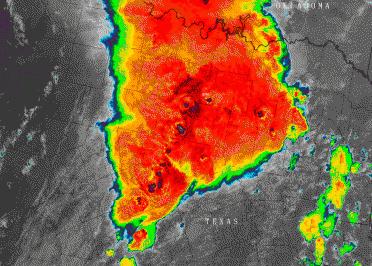


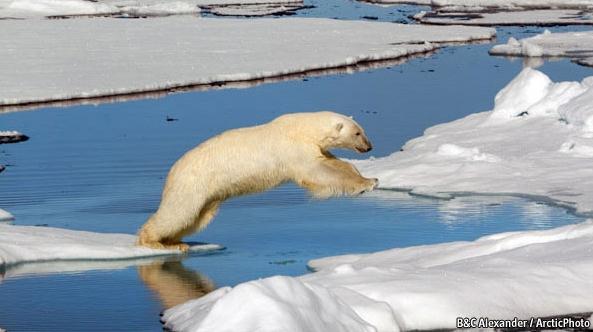





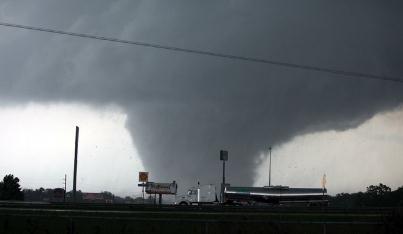
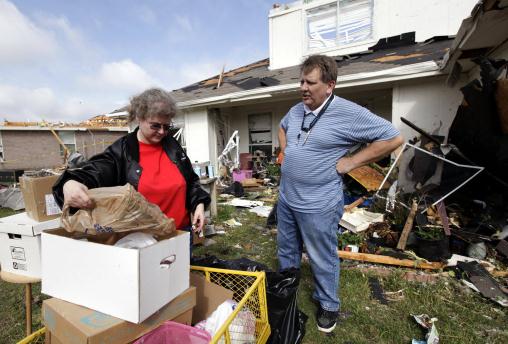


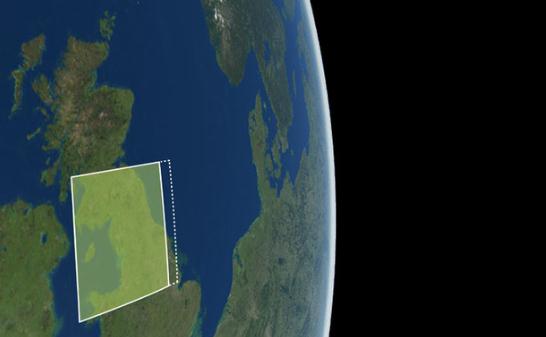

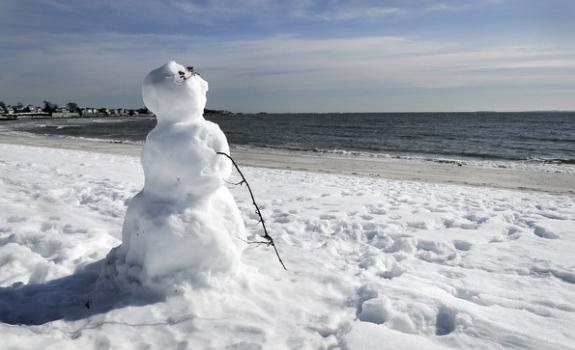

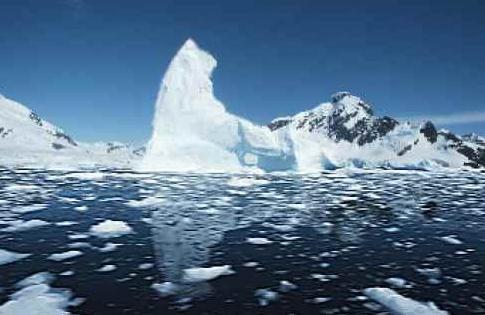
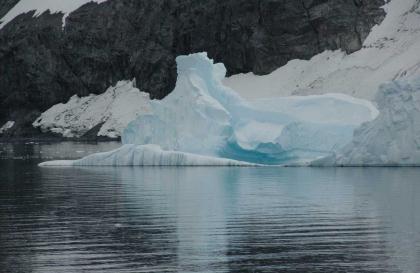






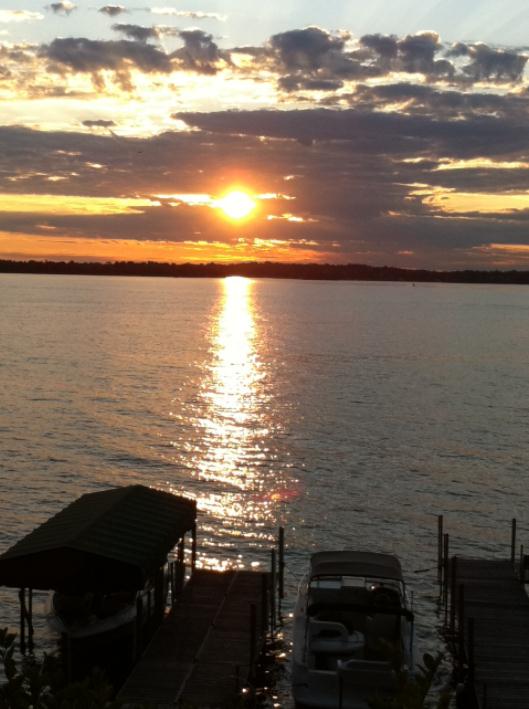
No comments:
Post a Comment